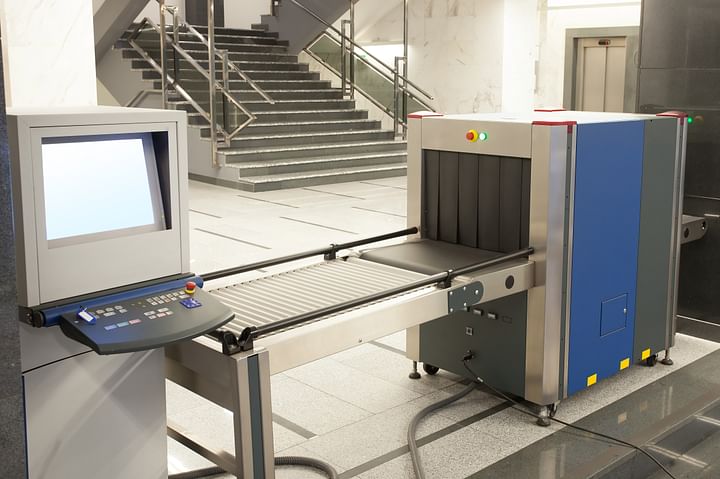The Customs department is the final checkpoint for goods that enter or leave the country. Customs officials are entrusted with the responsibility of ensuring that no illegal goods are smuggled into, or out of the country. Their job is crucial for the safety, security, and economy of the country.
In order to fulfill these responsibilities, Customs officials monitor screens that relay live X-ray images for hours on end. But are they trained to carry out this specialised work?
Many of India’s Customs officers are overworked, under-trained and unsupervised, a senior Customs' officer told The Quint on condition of anonymity.
Customs officers aren’t trained to use X-ray machines. A customs officer can be deployed at the X-ray machine anytime during his tenure. It could be at an international airport or at the Express Council of India, or the courier terminal, from where goods enter or exit the country.Senior Customs Officer
All goods meant for import and export are accumulated at the Express Industry Council of India (EICI). All courier services send their goods to EICI – except for DHL and Fedex.
“There are around 27 international airports in India. Every day, lakhs of passengers travel through these airports. The question is, is their baggage scanned properly by customs officers? And the answer is ‘no’. On the other end, tonnes of goods enter or exit India through courier terminals. The major companies ship them through FedEx or DHL. Smaller companies through EICI,” says the senior Customs Officer, who served at the EICI.
“There are around 27 international airports in India. Every day, lakhs of passengers travel through these airports. The question is, is their baggage scanned properly by customs officers? And the answer is ‘no’.”
The officer told The Quint that a 12-hour shift at the EICI is manned by two Customs Officers – one junior, one senior.

Sometimes, the officers fall asleep while on duty.
One of my colleagues was with me on a night shift. I stepped out very briefly to get some food. When I came back, I saw that my colleague had dozed off and the goods were being passed without being checked.Senior Customs Officer
When asked if he took any action, the officer said: “What action would I have taken? It is a normal issue. The shifts are 12 hours long. Anyone will get tired. Honestly, even I can’t work efficiently for that long”.
What kind of training do these officers undergo before they are assigned work? The officer says that in his case, there was no formal training.
We did not have formal training. I learned a few things from my colleagues. They learned it from their time at FedEx or DHL. The only thing that I knew was that on the X-ray scanner, gold shows up way darker than other goods.Senior Customs Officer

While this may sound like a one-off incident, consider this:
Around 40 percent of the goods that enter or leave the country pass through three centers of the Express Industry Council of India – located in Delhi, Mumbai and Hyderabad.
This means that 40 percent of our imports and exports are scanned by government employees who work exhausting 12-hour shifts.
Detecting gold and weapons on the X-ray is relatively easier than detecting narcotics and explosives like RDX, the official says.
As per the data released by Directorate of Revenue Intelligence (DRI), in the fiscal ending 2015, the all-India value of gold seizures was Rs 1,119.11 crore (including seizures worth Rs 274.80 crore by the DRI alone). During the same time period, the DRI seized Rs 365.56 crore worth of narcotics – the highest in the last three financial years.
What About DHL & FEDEX?
DHL and FedEx handle around 60 percent of the goods that enter or exit the company. These private international courier companies assign employees to scan items at the X-ray machines. A Customs official is also stationed at these courier offices.
Employees at FedEx and DHL are given formal training. Their shift rotates once every 20 minutes. They do that so people don’t lose focus. They also get a refresher course. On the other hand, Customs officials have a 12-hour shift.Senior Customs Officer

What’s At Stake?
The Central Board of Excise and Customs, which falls under the Finance Ministry, is responsible for these glaring systemic lapses. What’s at stake, however, apart from lost revenue, is our collective safety and security.
It also raises several questions – why aren’t customs officers are given basic skill training for their primary task? When private companies work to equip their employees with the required skills to scan goods, then why can’t the government do so?
(This admission season, The Quint got experts from CollegeDekho.com on board to answer all your college-related queries. Send us your questions at eduqueries@thequint.com.)
(At The Quint, we are answerable only to our audience. Play an active role in shaping our journalism by becoming a member. Because the truth is worth it.)